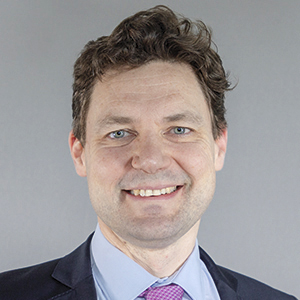
Partner | Financial Services

Partner | Financial Services
On 1 June 2022, the French Presidency published its “final” compromise text in relation to the revision to the EU Alternative Investment Fund Managers Directive[1] (known as “AIFMD2”).
According to this latest AIFMD2 Proposal, the following requirements would apply:
Definition of “loan origination”
Importantly, the compromise proposal includes a definition of “loan origination” being the “granting [of a] loan by an AIF as the original lender.” AIFs that acquire loans are referred to as “loan-partipating AIFs,” and provisions that are intended to cover both loan-originating AIFs and loan-participating AIFs now make that clear.
Various provisions also now expressly state that AIFs that gain exposure to loan origination through SPV vehicles are treated as “loan-originating.”
Leverage limit
The introduction of a leverage cap has always been one of the more controversial proposals and this remains, albeit it now more clearly surrounds only the issue of loan generation. The cap in the final compromise text has been reduced to 150% of the net asset value of the AIF. Were this to end up in the final text, it will be disappointing to the industry. Although there is still scope for this to be negotiated by MEPs, it is apparently a key consideration for a “vast majority” of Member States within the Council.
Leverage for these purposes is calculated using the “commitment” method, and borrowing arrangements that are temporary in nature and are fully covered by contractual capital commitments from investors in the AIF do not constitute leverage for these purposes.
Closed-ended vs. open-ended
Previously there has been a proposal that loan-originating AIFs (or AIFs exposed to loan origination through SPVs) should be closed-ended. Whilst this is still a stated requirement, the compromise text has now included a key derogation to confirm that a loan-originating AIF may indeed be open-ended provided that its liquidity risk management system is compatible with its investment strategy and redemption policy.
Investment objectives and ban on “originate-to-distribute”
No AIF which originates loans (directly or through exposure to loan originating SPVs) may have a strategy which has as a purpose the transferring of its loans or exposures to third parties (“originate-to-distribute”), except in circumstances where it has to meet redemption requests or to comply with its investment and diversification rules.
Risk retention obligation
Another controversial measure is a proposal that a loan-originating AIF must retain 5% of the notional value of the loans it has originated and subsequently sold on the secondary market. The EU Parliament had proposed the ban on “originate-to-distribute” strategies instead, but the compromise proposal has taken up both.
However, the original retention proposal has been adapted to apply for a two-year period from the signing date or until maturity (whichever is shorter) rather than on an ongoing basis. It also now applies to loans originated or purchased from a special purpose vehicle that originates a loan for or on behalf of the AIF or AIFM in respect of the AIF.
Credit policies and procedures
AIFMs of loan-originating AIFs must implement effective policies, procedures and processes for the granting of credit. AIFMs of both loan-originating AIFs and loan-participating AIFs must establish, maintain up-to-date, and review at least once a year policies and procedures for the assessment of credit risk and the monitoring of credit portfolios.
“Shareholder loans” – exemption for private equity and real assets
In order not to capture AIFs that ordinarily make loans to their investee companies and SPVs (as most real estate, infrastructure and private equity funds do), there is a specific carve-out of the leverage cap and the credit policies requirements for AIFs that make “shareholder loans,” which are defined as:
“an advance on current account granted by an AIF to an undertaking in which it holds directly or indirectly at least 5% of the capital or voting rights and which cannot be sold to third-parties independently of the capital instruments held by the AIF in the same undertaking”
and in situations where the origination of shareholder loans:
(i) do not exceed in aggregate 100% of the AIF’s capital; or
(ii) are granted to portfolio undertakings that acquire and manage real estate or participations in real estate companies, and in which the AIF directly or indirectly holds 100% of the capital or voting rights. This requirement shall apply on a look-through basis to underlying assets controlled directly or indirectly by the AIF or the AIFM acting on behalf of the AIF.
“Capital” for these purposes is now defined as “aggregate capital contributions and uncalled committed capital, calculated on the basis of amounts investible after deduction of all fees, charges and expenses that are directly or indirectly borne by investors.”
Concentration limits for financial borrowers
The percentage of the AIF’s capital (as defined above) that may be lent (by the AIF or any subsidiary vehicle) to a single borrower that is either a financial undertaking, an AIF or a UCITS is capped at 20%, subject to exceptions for ramp-up and wind-down periods.
Conflicts of interest
A loan-originating AIF cannot lend to its AIFM, the AIFM’s staff or delegates or its depositary.
Grandfathering
The concept of a grandfathering period is now included in relation to existing loan-origination funds. Currently, the compromise text states that this will be for a suggested period of five years from the date of adoption of the new directive. In addition, these changes shall not apply to funds that were established prior to the date of the new directive and do not raise any additional capital subsequently.
Timing
The French Presidency ends on 30 June 2022, and there is one further meeting scheduled this month of each of the Council and the Commission including a discussion on final AIFMD2 positions on the agenda. The European Parliament are considering the Rapporteur’s report and have until 27 June to submit final amendments. MEPs are then expected to agree on their final text but probably not until after the summer.
The process will be picked up by the Czech Presidency, which is expected to lead trilogue discussions this autumn with a view to agreeing a final text should be agreed prior to the end of the year. The new directive will come into force two years from its publication in the EU Official Journal, although we expect that the new rules will be implemented rapidly in Luxembourg and Ireland, in particular.
[1] Directive 2011/61/EU